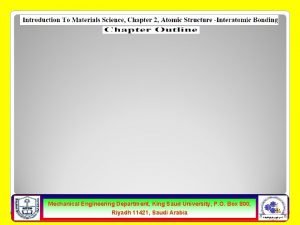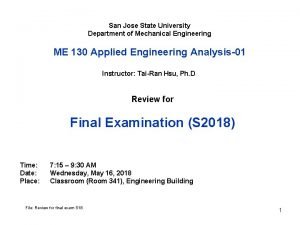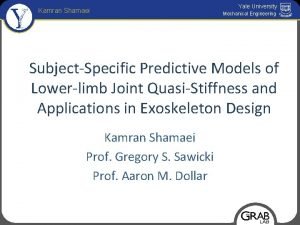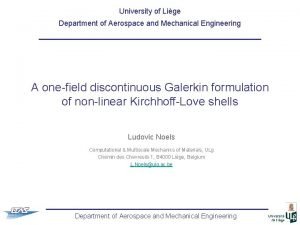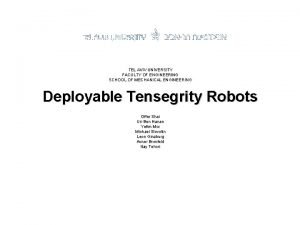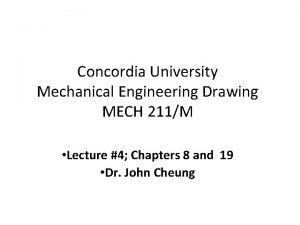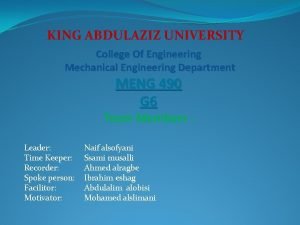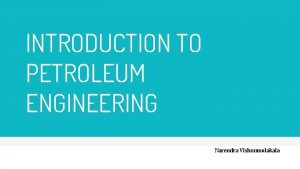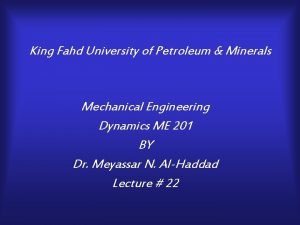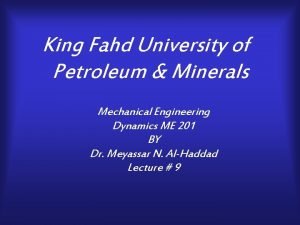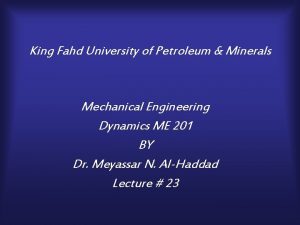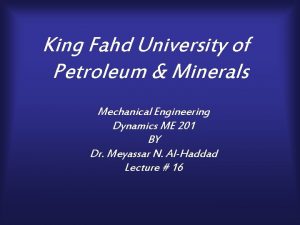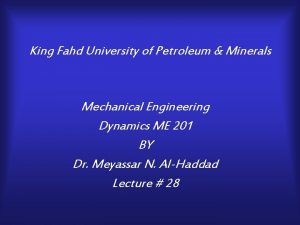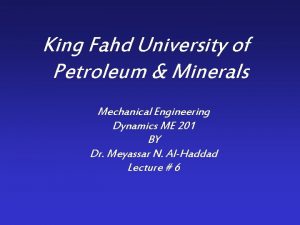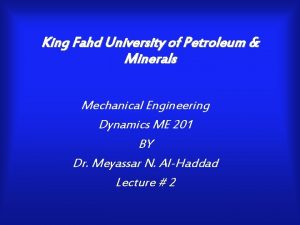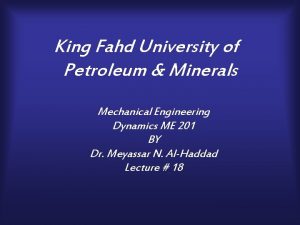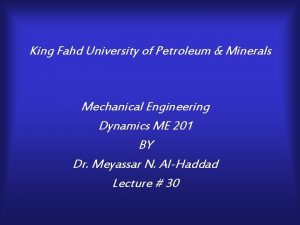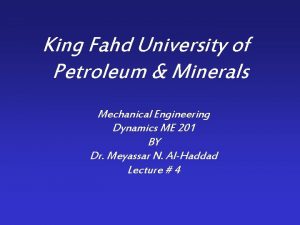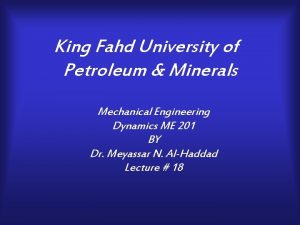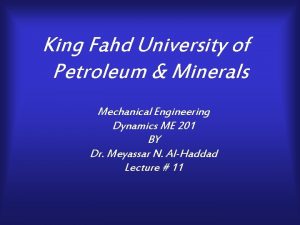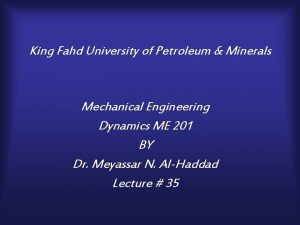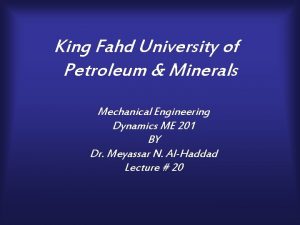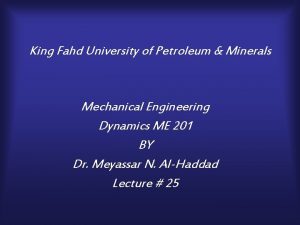King Fahd University of Petroleum Minerals Mechanical Engineering

















- Slides: 17

King Fahd University of Petroleum & Minerals Mechanical Engineering Dynamics ME 201 BY Dr. Meyassar N. Al-Haddad Lecture # 5

Objective • To investigate particle motion along a curved path “Curvilinear Motion” using three coordinate systems – Rectangular Components • Position vector r = x i + y j + z k • Velocity v = vx i + vy j + vz k • Acceleration a = ax i + ay j +az k (tangent to path) (tangent to hodograph) – Normal and Tangential Components – Polar & Cylindrical Components

12. 7 Normal and Tangential Components • If the path is known i. e. – Circular track with given radius – Given function • Method of choice is normal and tangential components

Position • From the given geometry and/or given function • More emphasis on radius of curvature velocity and acceleration

Planer Motion • At any instant the origin is located at the particle it self • The t axis is tangent to the curve at P and + in the direction of increasing s. • The normal axis is perpendicular to t and directed toward the center of curvature O’. • un is the unit vector in normal direction • ut is a unit vector in tangent direction

Radius of curvature (r) • For the Circular motion : (r) = radius of the circle • For y = f(x):

Example • Find the radius of curvature of the parabolic path in the figure at x = 150 ft.

Velocity • The particle velocity is always tangent to the path. • Magnitude of velocity is the time derivative of path function s = s(t) – From constant tangential acceleration – From time function of tangential acceleration – From acceleration as function of distance

Example 1 • A skier travel with a constant speed of 20 ft/s along the parabolic path shown. Determine the velocity at x = 150 ft.

Problem • A boat is traveling a long a circular curve. If its speed at t = 0 is 15 ft/s and is increasing at , determine the magnitude of its velocity at the instant t = 5 s. Note: speed increasing at # this means the tangential acceleration

Problem • A truck is traveling a long a circular path having a radius of 50 m at a speed of 4 m/s. For a short distance from s = 0, its speed is increased by. Where s is in meters. Determine its speed when it moved s = 10 m.

Acceleration • Acceleration is time derivative of velocity

Special case 1 - Straight line motion 2 - Constant speed curve motion (centripetal acceleration)

Centripetal acceleration • Recall that acceleration is defined as a change in velocity with respect to time. • Since velocity is a vector quantity, a change in the velocity’s direction , even though the speed is constant, represents an acceleration. • This type of acceleration is known as Centripetal acceleration

Problem • A truck is traveling a long a circular path having a radius of 50 m at a speed of 4 m/s. For a short distance from s = 0, its speed is increased by. Where s is in meters. Determine its speed and the magnitude of its acceleration when it moved s = 10 m.

Review • Example 12 -14 • Example 12 -15 • Example 12 -16

 King saud university mechanical engineering
King saud university mechanical engineering Milk alkali syndrome
Milk alkali syndrome Fahd: hi, ryan. where are you going?
Fahd: hi, ryan. where are you going? Fuente del rey fahd
Fuente del rey fahd Ytu erasmus ofisi
Ytu erasmus ofisi San jose state university mechanical engineering
San jose state university mechanical engineering Czech technical university mechanical engineering
Czech technical university mechanical engineering American university mechanical engineering
American university mechanical engineering American university mechanical engineering
American university mechanical engineering Yale university mechanical engineering
Yale university mechanical engineering University of florida mechanical engineering
University of florida mechanical engineering Tel aviv university mechanical engineering
Tel aviv university mechanical engineering Concordia university mechanical engineering
Concordia university mechanical engineering Faculty of mechanical engineering thammasat university
Faculty of mechanical engineering thammasat university College of engineering, king abdulaziz university
College of engineering, king abdulaziz university Petroleum engineering pros and cons
Petroleum engineering pros and cons Pedec
Pedec Ufa state petroleum technological university
Ufa state petroleum technological university
